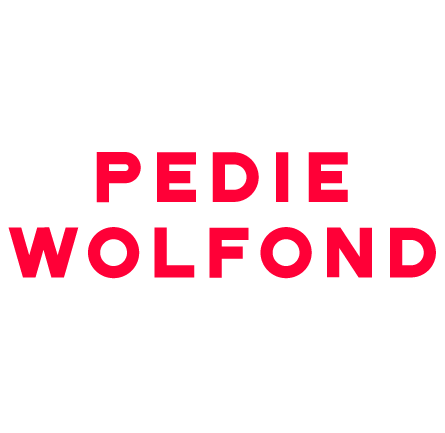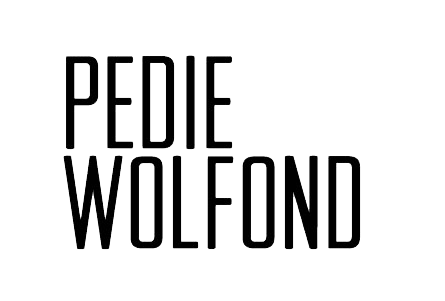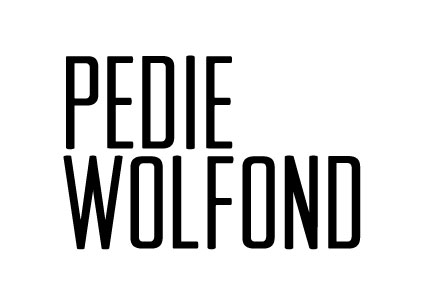02 Dec The Wonder of Pedie Wolfond
Read original article here: Article by Tom Smart: “The Wonder of Pedie Wolfond”
Published Saturday November 26th, 2011
by Tom Smart
Only a few weeks ago, the hardwood forests of southern Ontario were as radiantly brilliant as ever. But driving toward Guelph recently, the splendour of fall colours had been replaced by the grey monotones of bare branches and earth colours.
Within the University of Guelph campus, on a gently sloping lawn, is the MacDonald Stewart Art Centre. Its fine symmetry is described by a no-nonsense brick facade referencing the schoolhouse architecture echoed in several other buildings in the university’s historic precinct, now dwarfed by today’s glass, stone and brick structures.
The centre’s exterior proportions are softened somewhat by the many sculptures situated on the grounds around the gallery. The impression is haphazard, as if successive curators had tried, with mixed results, to add an out-of-kilter declension to the regular nouns and verbs comprising the predictable sentences of the academic buildings.
In short, dourness smothered the place, compounded by the late autumn gloaming and imaginative poverty of the red brick building.
Inside the gallery was a very different dimension of pure colour and energy. The rooms were aglow, overwhelmed by the large-format, colourfield paintings of the gifted Canadian artist, Pedie Wolfond. Her exhibition, Lumen, was an object lesson in the power of colour and visual movement to provide uplifting experiences that can take you out of yourself simply by being in the same space as these extraordinarily expressive canvases.
Chromophilia is a term describing a deep devotion to colour. It requires its students to grasp the complex lessons and difficult calculus of colour relationships and harmonies. Studying colour is a science and an art. It occurs over time and activates several senses simultaneously.
Half a century ago, the creation and study of painted colour fields occupied the art world’s centre stage. ‘Colourfield’ was both a theory and a way of painting; its adherents and acolytes held to a very narrow definition of what was aesthetically acceptable. The idea, as put forth by the charismatic and forceful critic, Clement Greenberg, was the singular march of modernist painting from the late 19th century through and beyond the Second World War was toward flatness, or what came to be termed as “the integrity of the picture plane.”
Beyond imagery, representation, painterly illusion and anything else that conveyed a message, a painting was essentially about colour – hues – on a flat surface. The Greenbergian School demanded this fundamental truth be evident in every painting and that artists practising this expressive mode had the obligation to respect the innate properties of materials. Expression, if it occurred at all, was held to a simple iconography of painterly marks whose only reference points were to themselves.
A painting was about itself – the relationships of abstract elements of colour, light, line, space and texture to each other. Meaning was found, if at all, in decoding the rational and self-evident facts of what was before your eyes and standing as witness in front of the work of art as a participant in the grand, heroic project whose trace was there in front of you.
Wolfond was schooled in and developed this aesthetic. She learned it well – its nuances and elasticity, rigidities and miraculous capacity to elevate viewers to entirely different states of consciousness. While many of her colleagues found an expressive language solely by working within its rational framework, Wolfond gave herself over to the wonder of colour in and of itself.
Wolfond held to the parameters of her materials, over the course of her career, spanning more than half a century. But she explored the way perception and experience of colour had the capacity to change mood and behaviour.
Her canvases pulsate with a vibrancy rarely experienced. Using just the most elemental of means – pure colours applied to canvases in luminescent, transparent washes – Wolfond displays a mastery of how a chromatic impulse can affect mind and mood. The paintings transcended their materials, and the limitations of their edges. They occupied the art centre’s galleries. In their aggregate accumulation, they established energy fields in the spaces in front of their surfaces and around the rooms.
Wolfond is the wisest of painters whose work opens up valuable avenues of inquiry about how the simple act of gazing at a colour can transform not only the viewer, but also the environment in which the art is beheld.
Tom Smart is a writer and curator living in Toronto, Ontario. He can be reached at smart.telegraph@gmail.com






